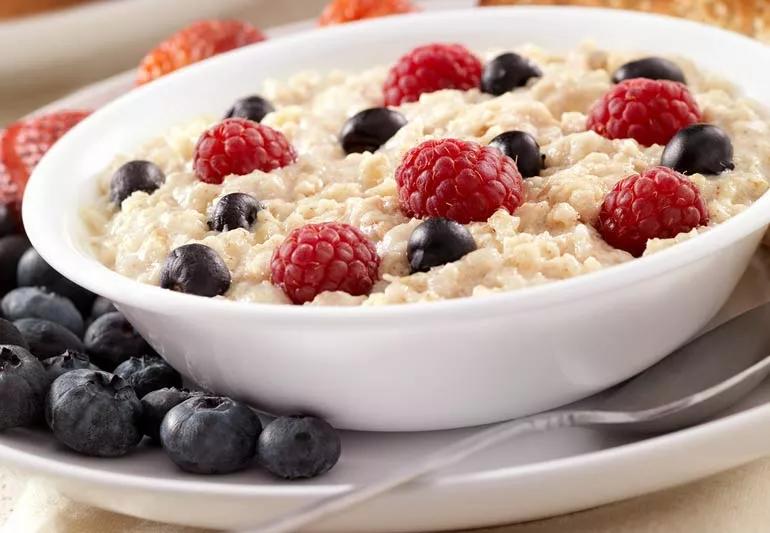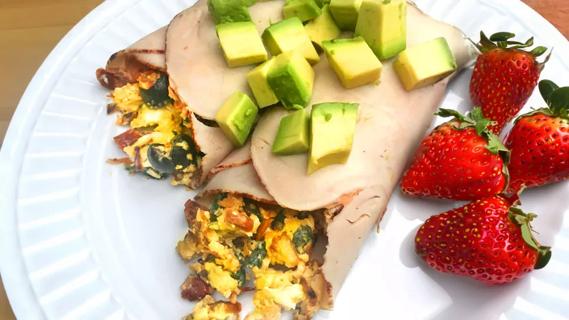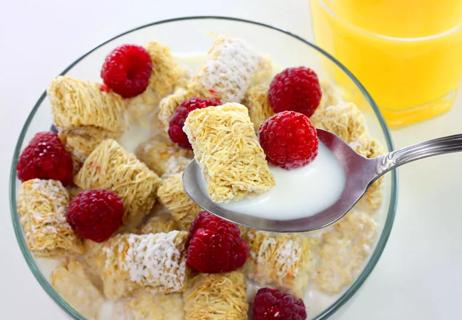It’s hard to beat the benefits of oats, but be cautious of sugared-up instant oatmeal options

Oatmeal carries a reputation as a bowl of healthy goodness. But is the mighty oat really that super-duper or are you getting snookered at the breakfast table every morning?
Advertisement
Cleveland Clinic is a non-profit academic medical center. Advertising on our site helps support our mission. We do not endorse non-Cleveland Clinic products or services. Policy
Well, the answer depends on what kind of oatmeal you’re eating.
It’s hard to go wrong eating basic run-of-the-mill oats, a whole grain with a stellar nutritional resume. But when you open a packet of flavored instant oatmeal for a meal … well, let’s just say the healthiness grade can drop a bit.
We turn to registered dietitian Beth Czerwony, RD, for some spoonful of knowledge on the matter.
Healthy food bragging rights? Oatmeal certainly has them. For starters, it’s packed with protein and dietary fiber — two biggies for your body when it comes to eating a nutritious diet. (More on that in a bit.)
And just look at this robust list of vitamins and nutrients found in old-fashioned rolled or steel-cut oats. (The numbers are for a half-cup of oats, roughly the amount in a single serving of oatmeal.)
“It’s really a nutrient-dense food,” says Czerwony.
Advertisement
So, what can all of those vitamins and nutrients do for you? Let’s break it down.
Want to keep your heart healthy? Eat oatmeal. Research shows that a daily bowl of oatmeal can lower your levels of total cholesterol and artery-clogging bad cholesterol. (High cholesterol levels can be a contributing factor to heart disease.)
Those oats can work pretty quickly, too, notes Czerwony. One study found that people saw significant changes in cholesterol levels after just six weeks of working oat flakes into their daily diet.
“It’s a big win for your health — and you get it done before leaving the house in the morning,” she adds.
Many of the good deeds linked to oatmeal involve a type of soluble fiber known as beta-glucan. Aside from its work on cholesterol, beta-glucan also can slow the absorption of glucose (or sugars) into your blood.
The reason? After you eat oatmeal, that beta-glucan breaks down into a gel-like solution that coats your gut. That thick layer of goo naturally slows down how fast sugars enter your bloodstream.
Given that, some studies show that oatmeal is an ideal food for someone with Type 2 diabetes. (Other research, however, has been more subdued about the effects of oatmeal on glycemic control.)
After a meal, oatmeal tends to sit heavy in your belly — and that can help you get lighter.
“If you feel full for longer after eating, it’s easier to go from meal to meal without grazing on unhealthy snacks,” says Czerwony. “In the end, that cuts down on extra calories you might consume.”
Researchers found that eating oats can reduce:
Thanks to its fiber-rich makeup, oatmeal can have a definite regulatory effect on your pooping pattern. It packs a double punch, too, with both insoluble and soluble fiber to help move things along.
Studies focused on older adults even show that eating oat bran can eliminate the need to take laxatives to relieve constipation, which often becomes more of an issue with age.
“Oatmeal can really help with digestion and your gastrointestinal health,” notes Czerwony.
A half-cup of oats contains about 4 grams of dietary fiber. To put that number in perspective, your daily fiber target for good gastrointestinal health should be between 25 grams and 35 grams.
Given all the good in oats, it seems like it would be a monumental task to make oatmeal anything less than healthy. But there is a way — which brings us to some instant oatmeal options.
Advertisement
Flavored oatmeal packets are often laced with enough sugar to erode some of the base nutritional value brought by the oats, says Czerwony.
“There are always ways to make things unhealthy, and that’s what we see with a lot of instant oatmeal,” she adds. “Food manufacturers will add sugar — a LOT of sugar — to make them taste better.”
Czerwony’s recommendation? “Check the nutritional label and look for added sugars. If you see them, look for another option.”
And if you want to boost the neutral flavor of oatmeal, add fruit or spices to your bowl. And even if you toss in sweeteners such as brown sugar or maple syrup, doing it yourself gives you more control over the added sugar.
So, if you’re now sold on oatmeal for breakfast, let’s set a menu. Here are some easy recipes to get the most from your oats.
Advertisement
Learn more about our editorial process.
Advertisement

Delicious and heart-healthy, this breakfast is sure to get your morning off to a good start

Jumpstart your morning with this delectable dish

Enjoy this one-skillet breakfast for dinner!

Keep your portions under control with these tasty treats

Whole-grain options low in sugar and sodium form the foundation of a good-for-you breakfast

A collection of recipes worth waking up for

Type 2 diabetes isn’t inevitable with these dietary changes

Applying a hot or cold compress can help with pain